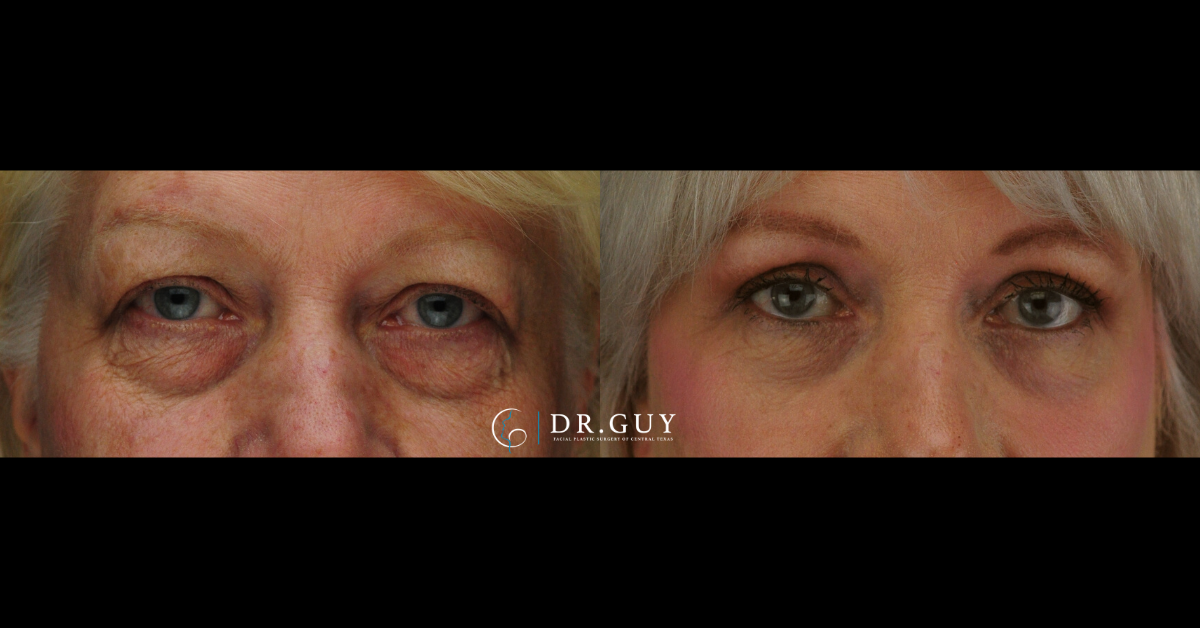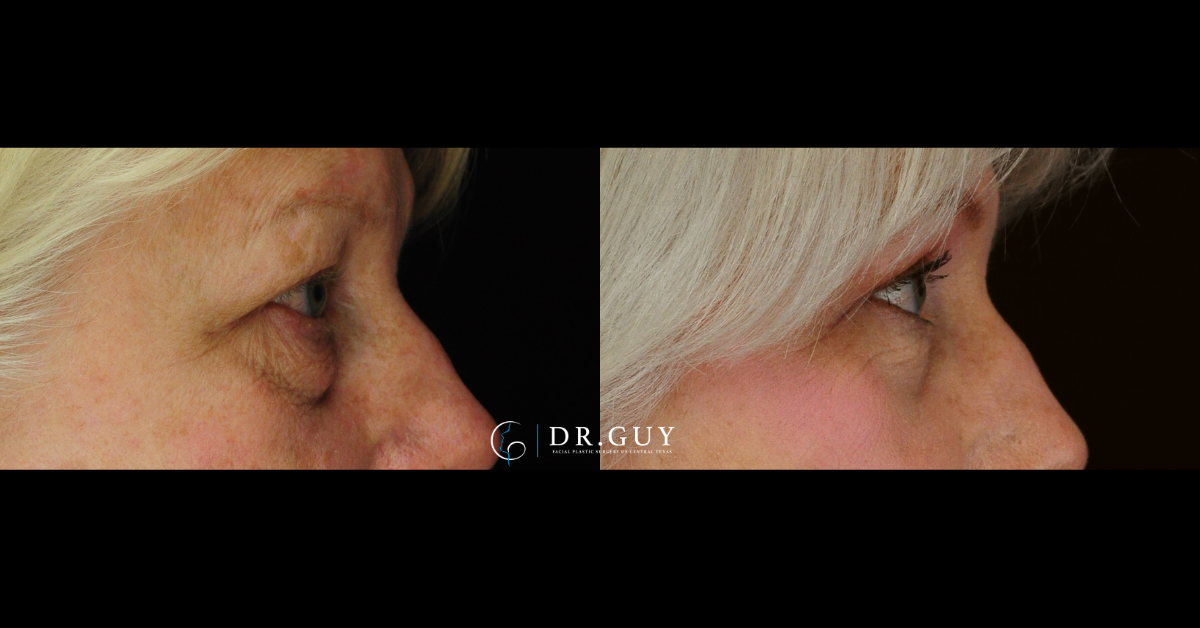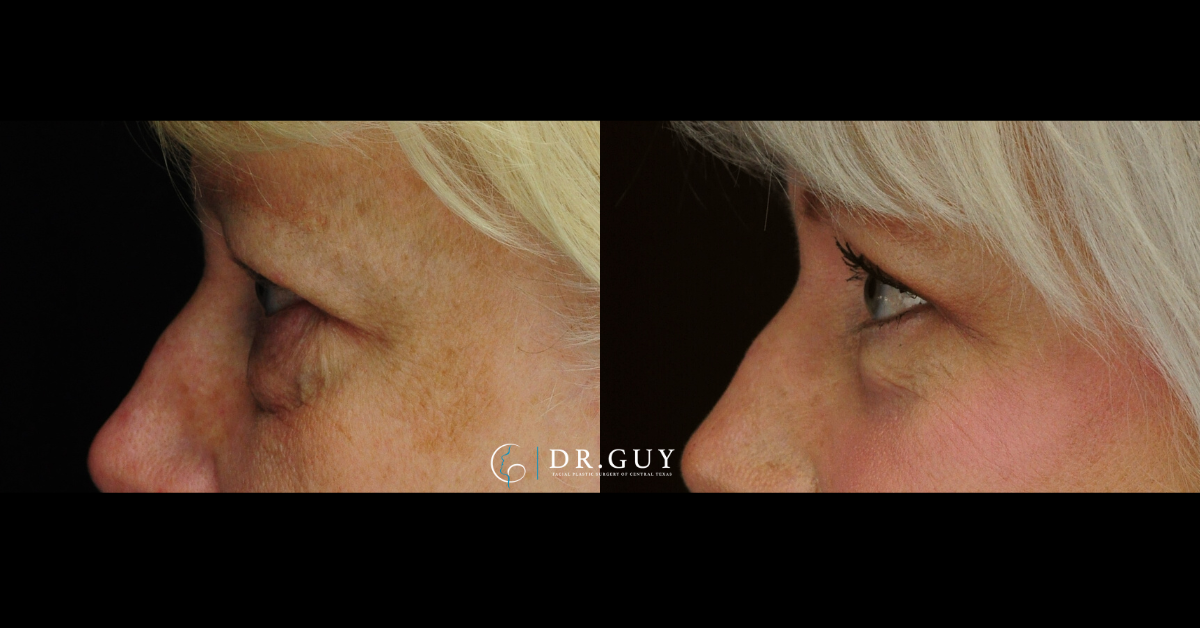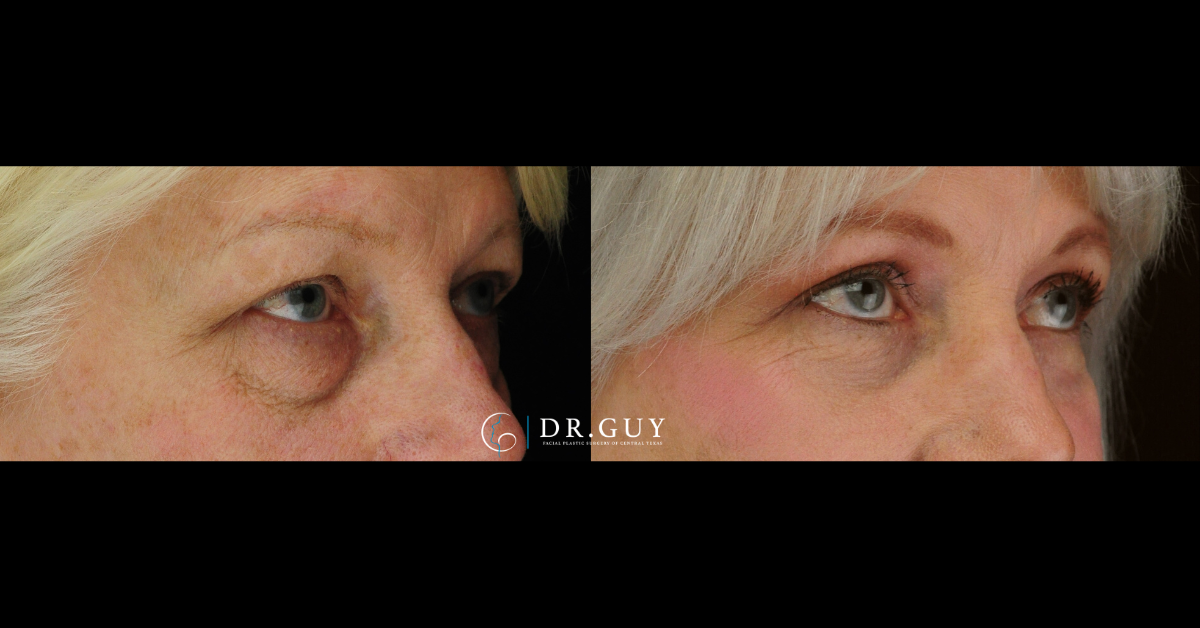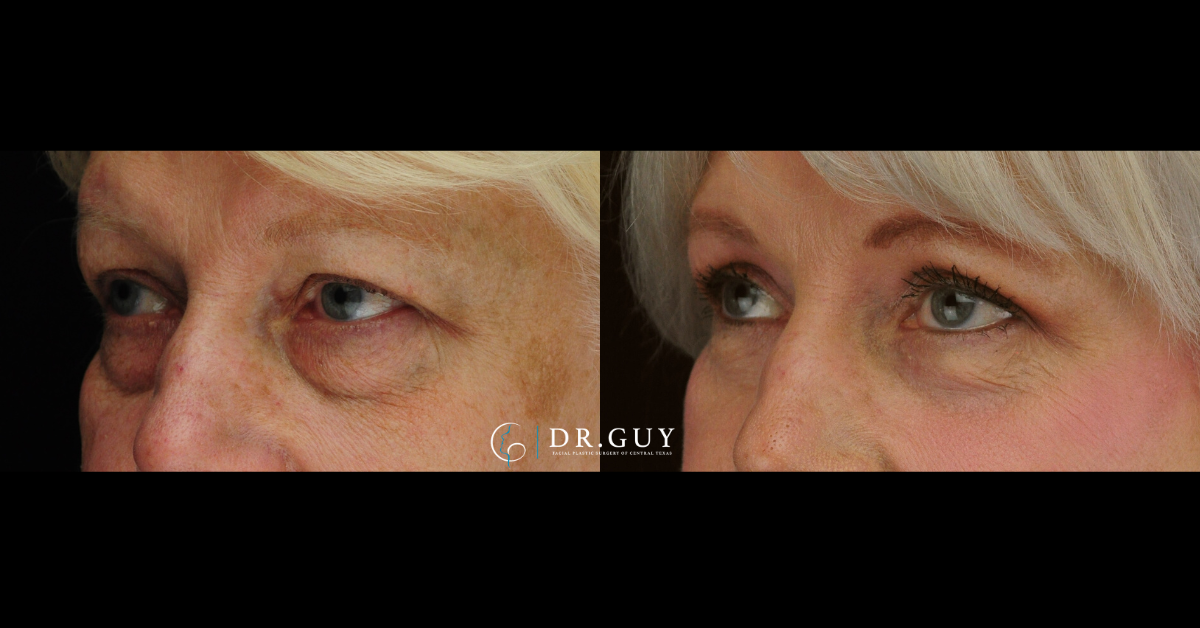Lower Blepharoplasty
(Eye Bags Removal) Services in
Central Texas
As people age, skin, muscles, ligaments, and lids all get lax. This can cause under-eye bags along with tear trough deformity, crepe-like skin, festoons, changes in the shape of the lower lid to occur, and dark circles under the eyes, making patients unhappy with their appearance. A lower blepharoplasty (sometimes called a “lower bleph”) addresses those bags under the eyes, helping patients achieve a more refreshed and desirable look.
People in the Waco and Central Texas area no longer do not need to venture to other areas of the state to receive professional plastic surgery services. Dr. Charles Guy and the highly regarded team at Facial Plastic Surgery of Central Texas offer patients a range of advanced cosmetic services from the collar bone up, including lower blepharoplasty procedures. Learn more about this safe and effective procedure and what to expect.
What Is Lower Blepharoplasty?
With age, the body’s skin stretches and the muscles supporting it weaken. One of the most noticeable areas of this can be found when looking at the skin under the eyes. Aging adults can experience excess skin and fat under their eyes, resulting in unflattering bags. Blepharoplasty refers to a type of eye modification surgery that removes excess skin from the eyelids.
What to Expect
Depending on the specific need, a lower-lid blepharoplasty will include tightening or removing the skin, removing or repositioning fat, repositioning the lower lid, and/or replacing lost volume. Having a natural transition from the lower lid to the cheek is what gives a patient the rested, more youthful look they desire.
Lower blepharoplasty is usually done in the operating room under anesthesia, but on occasion can be done in the office at Facial Plastic Surgery of Central Texas. Patients undergoing this procedure can expect the following:
After the procedure, the team will provide patients with detailed instructions on how to properly care for the treatment area. To help patients speed up their recovery, Facial Plastic Surgery of Central Texas recommends the following:
Patients should try their best to refrain from rubbing their eyes as it can cause irritation and slow the recovery process.
Why Choose a Lower
Blepharoplasty?
Given its many advantages, individuals elect to receive lower eyelid surgery for a variety of reasons. Scenarios in which a person may consider the lower blepharoplasty procedure include:
Patients Have Wrinkles or Bags Under Their Eyes
Aging, smoking, sun exposure, and other factors can cause the skin under the eyes to form noticeable wrinkles or bags. These imperfections often make people feel self-conscious about their appearance, decreasing confidence. Lower blepharoplasty offers patients with this emotional reaction the ideal solution.
Patients Are Looking for a More Youthful Look
The eyes are often the first thing people notice about a person. The goal of any lower blepharoplasty procedure is to create a more youthful and attractive appearance in the eyes, which brightens up the entire face.
Professional Lower
Blepharoplasty Services
in Central Texas
Those unsatisfied with their appearance due to excess skin under the eyes should consider lower blepharoplasty from Facial Plastic Surgery of Central Texas. Located in Waco, TX, the team offers a range of professional and safe cosmetic surgery services, helping clients achieve a look that boosts self-esteem. Dedication to patients’ needs and well-being has earned Facial Plastic Surgery of Central Texas a strong reputation. For more information about this eye bag surgery or other procedures, contact the office today to request a consultation.
FAQs About
Lower Blepharoplasty
Here are answers to frequently asked questions about lower blepharoplasty surgery:
What is the recovery time for a lower blepharoplasty?
Recovery time looks different for each patient. In general, 80% of swelling is gone in 2 weeks. Bruising can vary between patients, with some having little to no bruising and others having longer lasting bruising.
Will there be scarring after the procedure?
Dr. Guy’s approach to lower blepharoplasty involves making an incision on the inside of the eyelid, so there’s no external scarring. If you have excess skin, Dr. Guy may need to do a skin pinch but will keep the muscle intact to avoid complications.
How long do the results of a lower blepharoplasty last?
Lower blepharoplasty procedures provide long-lasting results, between 15 to 20 years. While aging patients may experience a few wrinkles and lines over time, they will not be as severe or as noticeable.
Are there non-surgical alternatives to eye bag removal?
While eye bags cannot be removed without surgery, many non-surgical treatments work to reduce their appearance. Fillers can be used to change the contour to the area under the eyes where it transitions to the cheek to help reduce the appearance of bags. They can also give the face a lifted, or more youthful appearance. Dr. Charles Guy considers all a patient’s options to meet their needs.
Can other procedures be combined with a lower blepharoplasty, for example, a nose job?
Clients can receive additional plastic surgery services procedures during their lower blepharoplasty, such as:
What should I do to prepare for eyelid surgery?
If a patient undergoes general anesthesia for their eyelid surgery, they may also have to adjust their medications. In addition, patients should have someone to drive them home after surgery and take care of them during their first night.
What should I expect during the initial consultation?
Dr. Guy discusses the patient’s concerns and what their goals are. He will evaluate the patient’s current medical condition, as well as their past medical history. Dr. Guy will use this information to craft a cosmetic plan that best meets the patient’s goals.
Can I see before-and-after photos of previous lower blepharoplasty patients?
Yes – patients can browse our eyelid surgery gallery for before-and-after photos of past patients.
What kind of anesthesia is used for eye bag removal?
Lower blepharoplasty is typically performed in the operating room under general anesthesia. In some instances, Dr. Guy will perform this procedure in the office using local anesthesia with oral medications to help the patient relax.
Will I need to stay overnight in the hospital after the surgery?
Patients do not need to stay overnight in the hospital, and they can return home the same day as surgery. They will need someone to stay with them for the first 24 hours after the surgery.
What kind of follow-up care will I need?
If having the lower eyelids done, you will need to follow up in the office the same day as the surgery as well as the following day. If just having upper eyelid surgery, then follow-up the next day should suffice. The next follow-up is 1 week after the surgery to remove sutures if needed and to assess healing.
When can I resume normal activities, like exercise or work, after eye bag removal?
There is no lifting more than 10 lbs. for 2 weeks after a lower blepharoplasty. Upper blepharoplasty usually has a limit of 10 lbs. the first week and 20 lbs. the second. Patients may return to normal exercising after 2 weeks following both surgeries.


